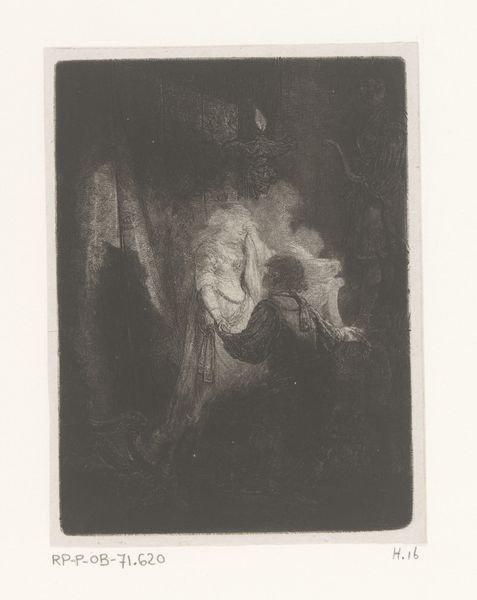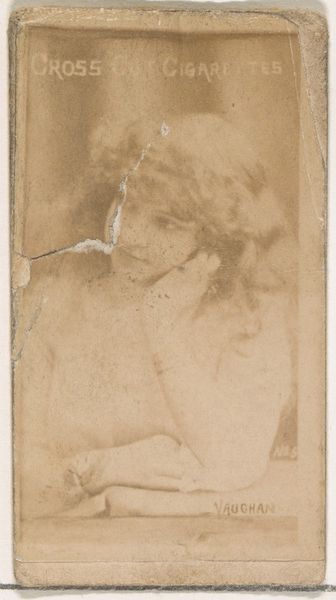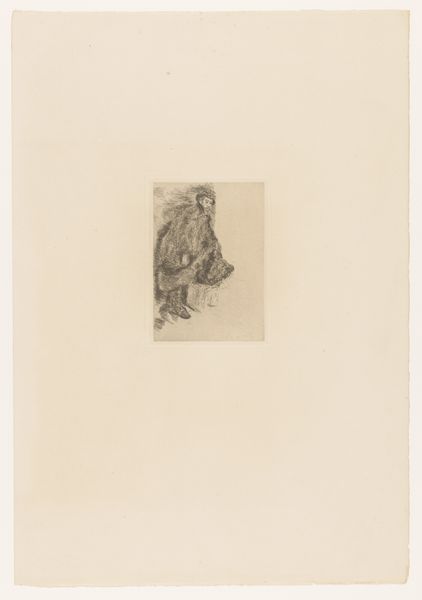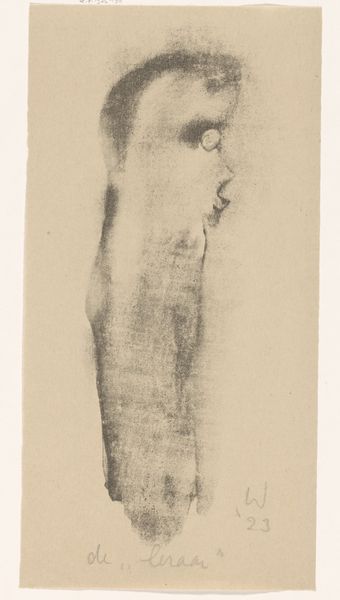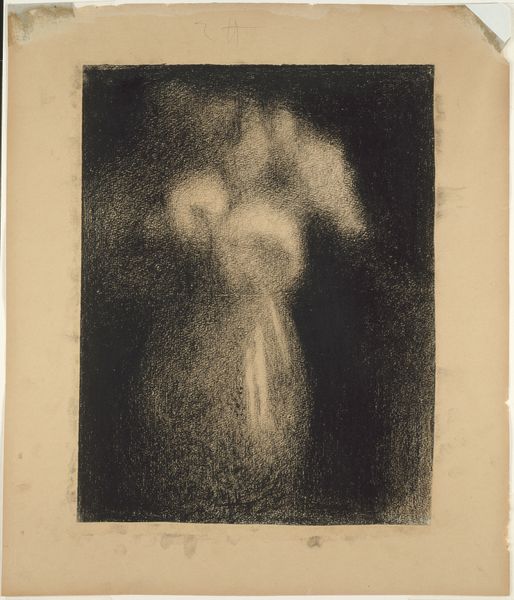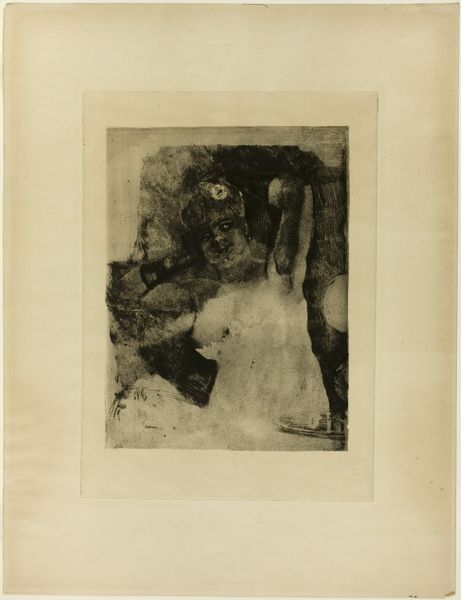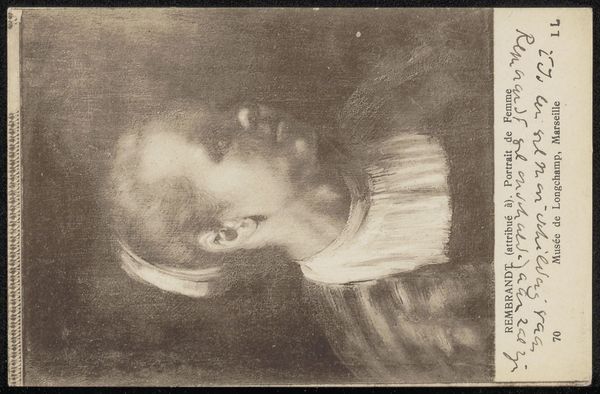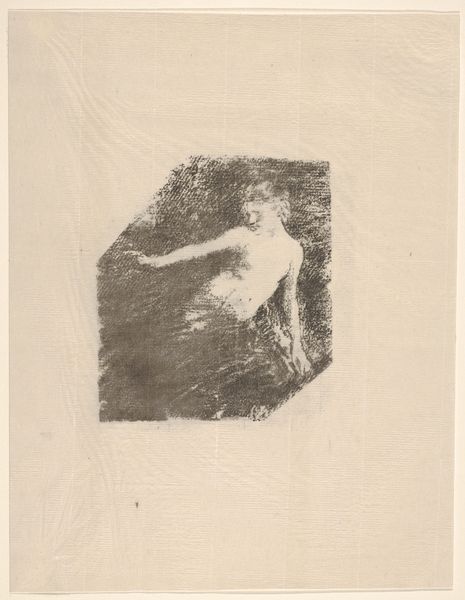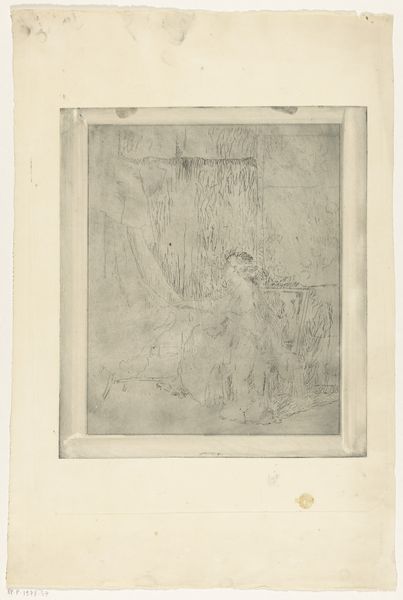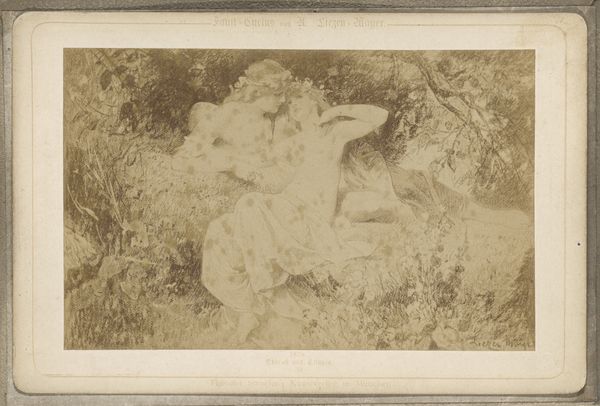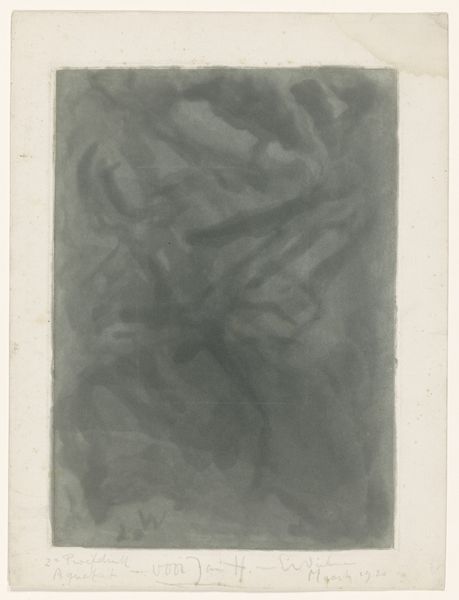
print, graphite
#
portrait
# print
#
impressionism
#
organic shape
#
graphite
Dimensions: height 331 mm, width 234 mm
Copyright: Rijks Museum: Open Domain
Curator: Welcome, everyone. We’re standing before “Bruidje,” a graphite print made around 1890 by Carel Lodewijk Dake, here at the Rijksmuseum. Editor: My first impression is melancholy, a quiet resignation. The woman's downcast gaze and the monochromatic palette evoke a sense of subdued emotion. Curator: It's fascinating how Dake captured that emotion with such minimal detail. Given the title, which translates to "Little Bride," we can contextualize that downcast gaze. Arranged marriages, limited agency for women, societal pressures of the time…it all suggests a constrained future, right? Editor: Indeed. And even the style itself, which flirts with Impressionism, enhances that feeling. It’s soft, veiled, like a memory fading or a dream deferred. The flowing, almost chaotic lines that surround the woman's form contribute to an aura of disruption. Curator: That chaos speaks to something deeper too. Consider the performative nature of marriage for women in the late 19th century—a performance dictated by patriarchal structures. What symbols can you identify that might tell us more? Editor: Well, despite the title, overt symbols are strangely absent, aren't they? There's no ring visible, no clear indicator of a wedding garment, except for the suggestive contours. It forces us to focus on the internal psychological state rather than external trappings. Curator: Exactly. Dake deliberately withholds. Is it a commentary on the performativity of marriage and female subjugation within a certain timeframe? He gives us a window into the bride's subjective experience rather than confirming outward social expectations. Editor: What strikes me is how little the symbol of the “bride” has changed even though society and its understanding of gender roles have radically evolved since this print was made. Perhaps, at its core, marriage remains an imposition for many, not a dream come true. Curator: That intersection of the personal and political feels intensely relevant. And the tension created between the known symbolism, that of marriage, and the artist’s deliberate ambiguity—creates the work’s powerful tension. Thank you for sharing that insight. Editor: Thanks to you as well. Looking at “Bruidje,” I feel drawn into its visual poem. Despite the sadness, I can’t help but admire Dake's technique of expressing complex states of emotion in a portrait lacking a firm subject or solid symbol.
Comments
No comments
Be the first to comment and join the conversation on the ultimate creative platform.
